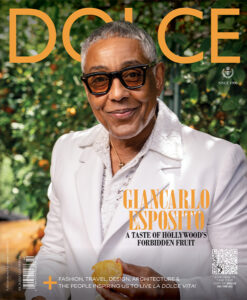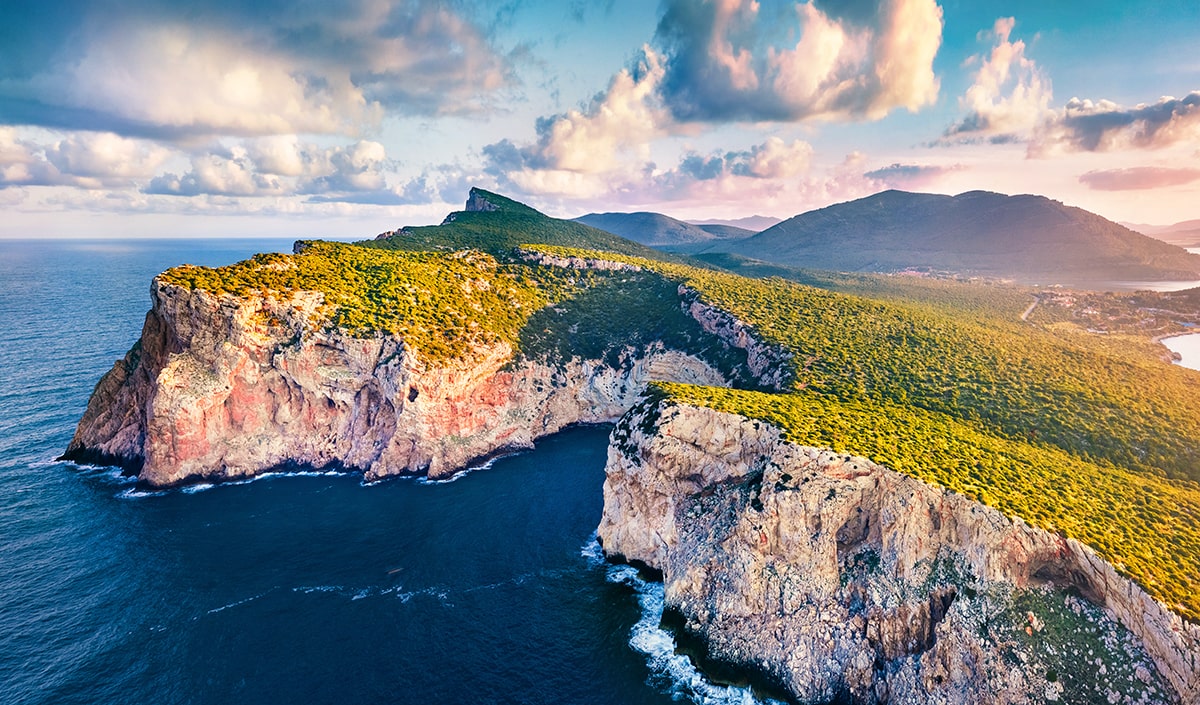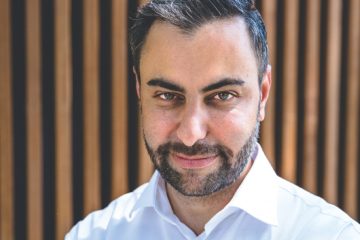Dan Buettner: Live To Be 100
Imagine that you had the keys to unlock a longer life expectancy. Thankfully, Dan Buettner, multiple New York Times bestselling author and National Geographic Fellow, is handing them to you by virtue of his research into “Blue Zones” — the five places in the world where an unusually high number of people have reached an advanced age. So, what are a few of the keys to people in Okinawa, Japan; Sardinia, Italy; Nicoya, Costa Rica; Ikaria, Greece; and Loma Linda, Calif., living longer? More movement and beans. “It’s thinking about how to inconvenience your life a little bit and not trying to seek every mechanical comfort … I think the most important ingredient in the longevity diet is beans. They’re cheap and they’re full of protein, fibre and folates,” says Buettner.
Young people think they’re going to live forever. Until you develop your first wrinkle or first back pain or start to squint your eyes is when you even start thinking about your own mortality and then longevity starts getting more interesting for people,” says Buettner.
Age isn’t just a number in the world of the Blue Zones. In Okinawa, Japan; Sardinia, Italy; Nicoya, Costa Rica; Ikaria, Greece; and Loma Linda, Calif., age is the proof in the pudding that a longer and healthier life can be unlocked through changes in lifestyle. While exploring the world to find where people live the longest, Buettner found that there are nine common characteristics throughout each zone, by befriending locals in every Blue Zone, observing and joining in with their daily routines and discussing their approaches to life, food and aging.
Buettner translates his experience in these places and decodes what makes these particular zones breed life longevity, health and a prosperous life. For example, in Ikaria, he discovers a town that has extremely low rates of dementia and Alzheimer’s, which suggest that most cases are avoidable. “People are eating a whole-food, plant-based diet, people are moving all the time, keeping their minds engaged, avoiding toxins and air pollution, especially. These people are avoiding Alzheimer’s at these extraordinary rates. I know Alzheimer’s scientists who assert that up to 80 per cent of Alzheimer’s is avoidable by just doing the right things.”
In his latest book, a companion book to the No. 1 New York Times bestseller The Blue Zones Kitchen, Buettner offers a four-week guide and a year-long sustainability program to jump-start your journey to better health and happiness, less stress and a longer life. “The important thing to realize about Blue Zones is that we found the same things that help you make it to 100 are also the same things that make the journey enjoyable. People who are really interested in living a long time, they are enjoying the journey, and that’s just as important. Some people aren’t dying to live to 100. It’s an interconnected, interlaced formula.”
Q: For those who don’t know about the Blue Zones, what are they and what makes them special?
A: Twenty per cent of how long we live is genes, and 80 per cent is something else, then we can actually find places where people are achieving the outcomes we want — that is, living a long time without disease — then, they must be doing something. Our project set out to find the areas in the world where people live the longest. We found them in Ikaria, Greece; Okinawa, Japan; Ogliastra Region, Sardinia; Loma Linda, Calif.; and the Nicoya Peninsula, Costa Rica. Once we found those places, then we went about using established methodology to find the common denominators. In the places where people live a long time, what are they all doing? That was the topic of my first book: The Blue Zones, 9 Lessons for Living Longer from the People Who’ve Lived the Longest. It turns out, they all have the same nine characteristics.
“I recognize that among most 100-year-olds, one of the biggest Predictors of making it to 100 is Being likeable. And you might say, “what? Likeable? I thought you were Supposed to eat more vegetables”
Q: Were you always fascinated with the topic of longevity and health?
A: No. I did read the 1974 National Geographic article by Alexander Leaf about places where people live a long time, and I was impressed by it, but I’m more of an explorer. I’m not a health guru. My chosen profession/purpose is solving mysteries that illuminate the human experience. The Blue Zones work was an extension of that.
Q: What fascinates you most about the Blue Zones, other than the nine characteristics they have in common?
A: I’m generally interested in people, and people who are around 100 years old have lots of great stories. It’s wonderful to be able to make a career out of learning the stories of people who live in exotic places and have so much wisdom. I was able to apply their wisdom in my own life.
Q: On top of everything, you hold three Guinness World Records in distance cycling. What do you love about cycling?
A: Well, I think driving places is largely transportation, and bicycling is travel, so you have a really strong connection to your surroundings. You get physical activity, you can wave at your friends, it’s good for the environment, it doesn’t burn fossil fuels and carbon in the atmosphere, so they’re so many benefits. A healthier America will ride on a bicycle while eating beans.
Q: Can you share one of the stories that has affected you?
A: I recognize that among most 100-year-olds, one of the biggest predictors of making it to 100 is being likeable. And you might say, “What? Likeable? I thought you were supposed to eat more vegetables.” But, it turns out that likeable people get better care and have better social connectivity, and part of that is being interesting, as well as interested. Part of it is being generous. These are things that perhaps I didn’t do such a good job at in my earlier years, and now I’m much better at it.
Q: Your new book, The Blue Zones Challenge: A Four Week Plan For a Longer, Better Life, what is your favourite recipe in the book?
A: It’s a minestrone. Made by the family of nine siblings, whose collective age is 840 years. They’re the longest-living family in the history of the world. They ate the same minestrone every day. It has three beans, garden vegetables, olive oil, red pepper, oregano and extra-virgin olive oil. I eat it almost every day.
Q: What are some of the top ingredients used that are proven to help live a long life?
A: Whole grains, which include corn, rice and wheat. Greens, beans. I think the most important ingredient in the longevity diet is beans. They’re cheap and they’re full of protein and fibre and folates, and then the best snack food is nuts. Eating a handful of nuts every day is probably worth two years of life expectancy.
Q: Other than food/good nutrition, what are some of the key factors that help us live longer?
A: Having a strong sense of purpose is worth about eight years of life expectancy. Belonging to a faith, taking time every day to do a prayer meditation, taking naps. Living in a place where it’s easy to walk. Fewer than 15 per cent of Americans get enough exercise. We buy a gym membership and we think we’re going to go and we don’t — or we don’t go enough. In Blue Zones, nobody is really exercising, but they’re walking to a friend’s house or walking to work or they have a garden out back. They’re doing housework by hand or garden work by hand, so it’s thinking about how to “deconvenience” your life a little bit and not trying to seek every mechanical comfort.
Q: Can you speak on this quote: “Eat breakfast like a king, lunch like a prince and dinner like a pauper”? How does this play into how one should plan meals throughout the day and how it ties into the Blue Zones?
A: In general, they’re eating all their calories in about a 16-hour window, so I actually think the best way to eat is a huge late breakfast and then a late-afternoon meal, and that’s it. Thinking about eating at 10 a.m. and 4 p.m. That’s probably the best pattern, and if that doesn’t work for you, a huge breakfast, a medium-sized lunch and a little or no dinner. I realize that’s hard to do, but, for weight loss and longevity, that’s really the best way to go.
Q: Can you tell us about how most cases of Alzheimer’s and dementia cases are avoidable, and what you saw on the Greek island of Ikaria?
A: To your point, it is avoidable. A team from The University of Athens interviewed about 97 per cent of everybody over the age of 65 in Ikaria, and found almost no dementia. Two or three very mild cases, which shows us that it’s avoidable. These are people with genetic diversity, and they’re making it to these very old ages and staying sharp until the very end, which, in my mind, reaffirms that we can do it. The things we know work. People don’t believe this because we live in a kind of meat- and processed-food-obsessed culture, and it’s really not our fault; it’s just that that’s the food that’s available, but it’s very clear that people are eating a whole-food, plant-based diet.
Q: What does la dolce vita/the sweet life mean to you?
A: Remaining healthy, pursuing your purpose and living with pleasure and satisfaction to 100.
This interview has been edited for length and clarity.





















































































